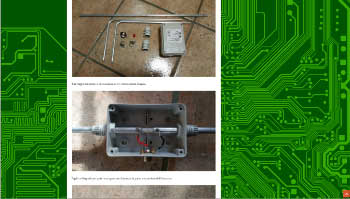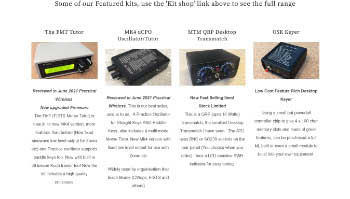 Hits
Hits

FM Dipole for 88-108 MHz 50 ohm
The dipole antennas for reception or transmission for the FM band 88-108 Mhz are normally 75 Ohm impedance. In this project a FM antenna for 88-108 Mhz can be calibrated with 50 Ohm impedance and double polarization. experimental project of the ZED Dipole for the amateur band VHF.The measures of the tubes: 28 Cm Vertical section; 33 Cm Horizontal section with bending at 90 then another 15 Cm which will be used for calibration
post 06 Apr 2024

Antenna for UHF VHF Links →
Antenna double bands 144/432 mhz
Questa antenna e' lunga circa 1,5 metri solo circa 30 centimetri in piu' di una quattro elementi a spaziatura costante classica
Antenna YAGI a 6 elementi per i 2 metri
Il boom e' lungo 1,75 m sezione 1,8 x 1,8 cm, il riflettore 50,3 cm, il radiatore 48,9 cm, d1 44,9cm, d2 44,3 cm, d3 40,8 cm, d4 39,5cm
Antenna Yagi 4 elementi UHF
Adaptation with hairpin on uhf is very functional and stable, and above all it is preferable to the match range
Antenna Double loop rx satellite 137.5mhz
operating frequency = 130 to 170 MHz ,center frequency = 137.5 MHz, perimeter of loops = 227 cm, material used = copper or aluminum = 227x3x0.2 cm, horizontal polarization gain 3 dbd
Antenna for 6 meter band Halo
A square folded dipole radiates in all directions, with -4dB gain on the sides compared to the front and back side
153
Questa antenna e' lunga circa 1,5 metri solo circa 30 centimetri in piu' di una quattro elementi a spaziatura costante classica
Il boom e' lungo 1,75 m sezione 1,8 x 1,8 cm, il riflettore 50,3 cm, il radiatore 48,9 cm, d1 44,9cm, d2 44,3 cm, d3 40,8 cm, d4 39,5cm
Adaptation with hairpin on uhf is very functional and stable, and above all it is preferable to the match range
operating frequency = 130 to 170 MHz ,center frequency = 137.5 MHz, perimeter of loops = 227 cm, material used = copper or aluminum = 227x3x0.2 cm, horizontal polarization gain 3 dbd
A square folded dipole radiates in all directions, with -4dB gain on the sides compared to the front and back side


